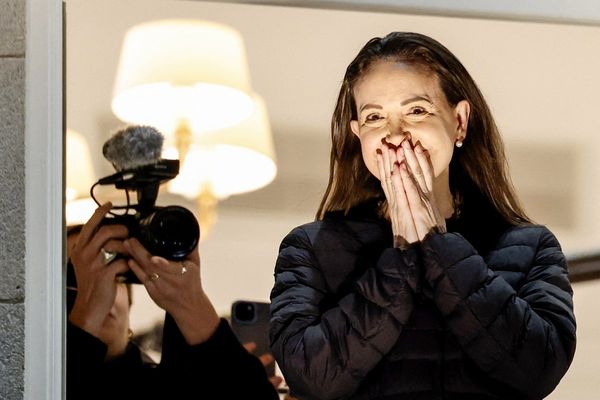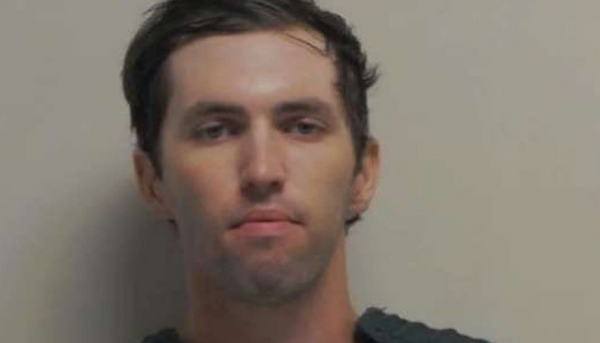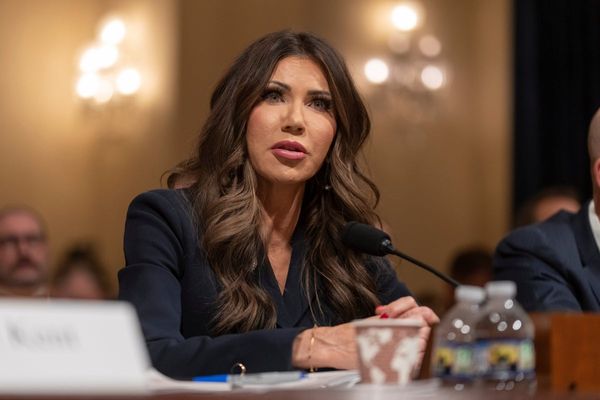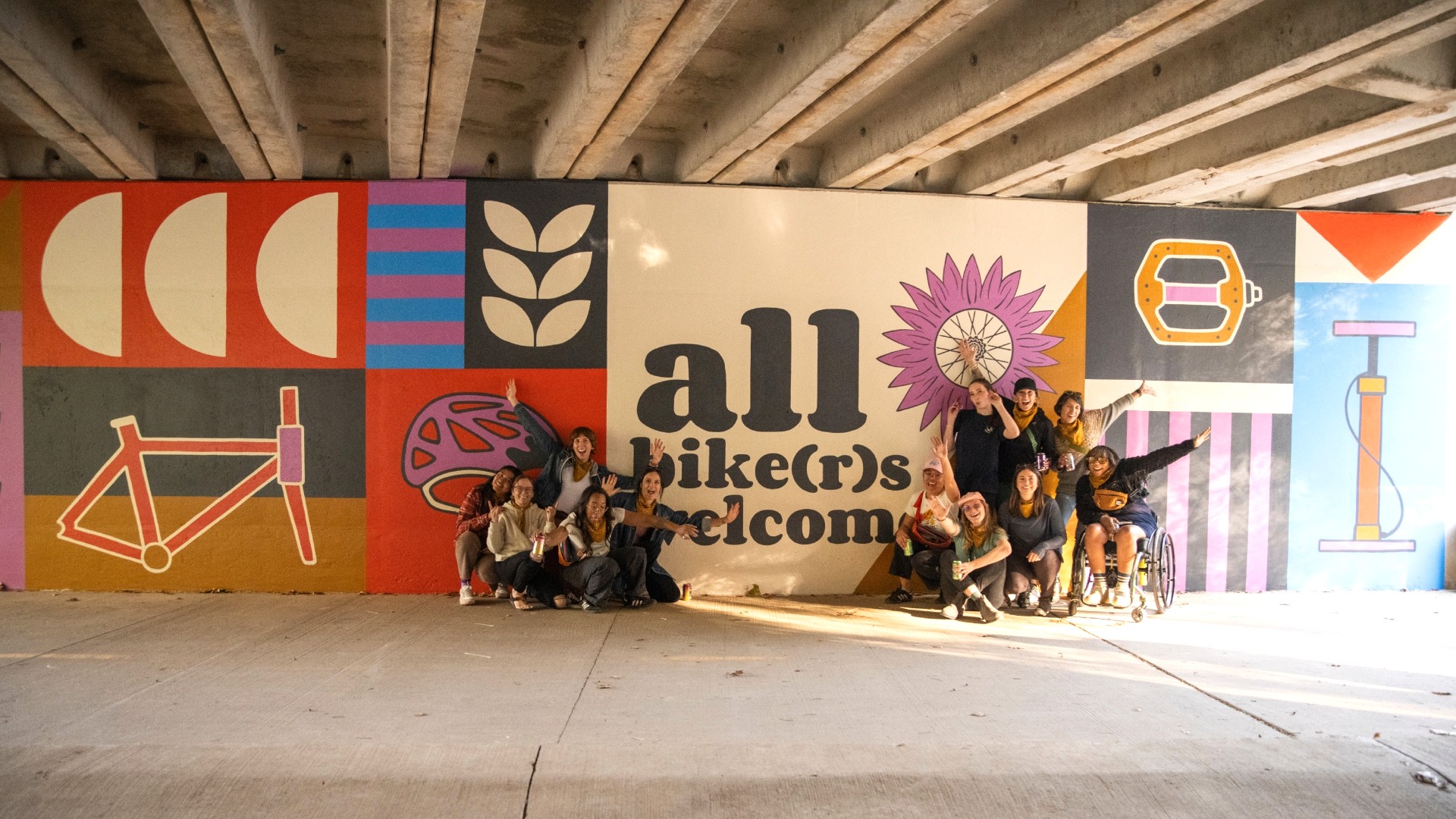
Beneath a quiet overpass on the paved trail leading into Coler Mountain Bike Preserve in Bentonville, Arkansas, a once-drab tunnel now bursts with lavender, red, mustard yellow and cobalt blue. A bike wheel doubles as a flower. A helmet floats beside a water bottle. In bold black letters, the message reads: all bike(r)s welcome.
It’s the kind of art you might find on a sticker, a water bottle or the back panel of a cycling jersey: playful, bright and full of two-wheeled pride. But in recent months, the mural became the focus of a local dispute over interpretation, process and public messaging.
The idea for the mural started as a small fundraising design for All Bikes Welcome, a local nonprofit focused on inclusivity in cycling, and the women-led apparel brand Wild Rye. Local artist Paige Dirksen, a printmaker and quilter, created a graphic inspired by quilt patterns with each shape representing a piece of the community.
The design was so popular that they decided to scale it up. The City signed off, the mural site was chosen, and more than 80 volunteers pitched in to help paint it. The City promoted it. Riders posed for photos.
Then, two months later, Dirksen received an unexpected email from Bentonville Mayor Stephanie Orman, raising concerns.
“We were honestly confused,” Rachel Olzer, executive director of All Bikes Welcome, tells Cycling Weekly. “The message was vague. I thought maybe they wanted to power wash the wall or apply anti-graffiti coating.”
Instead, the City claimed the mural deviated from its approved design and gave Dirksen a June 15, 2025, deadline to make unspecified changes, or risk termination of the contract.
Colour is Relative
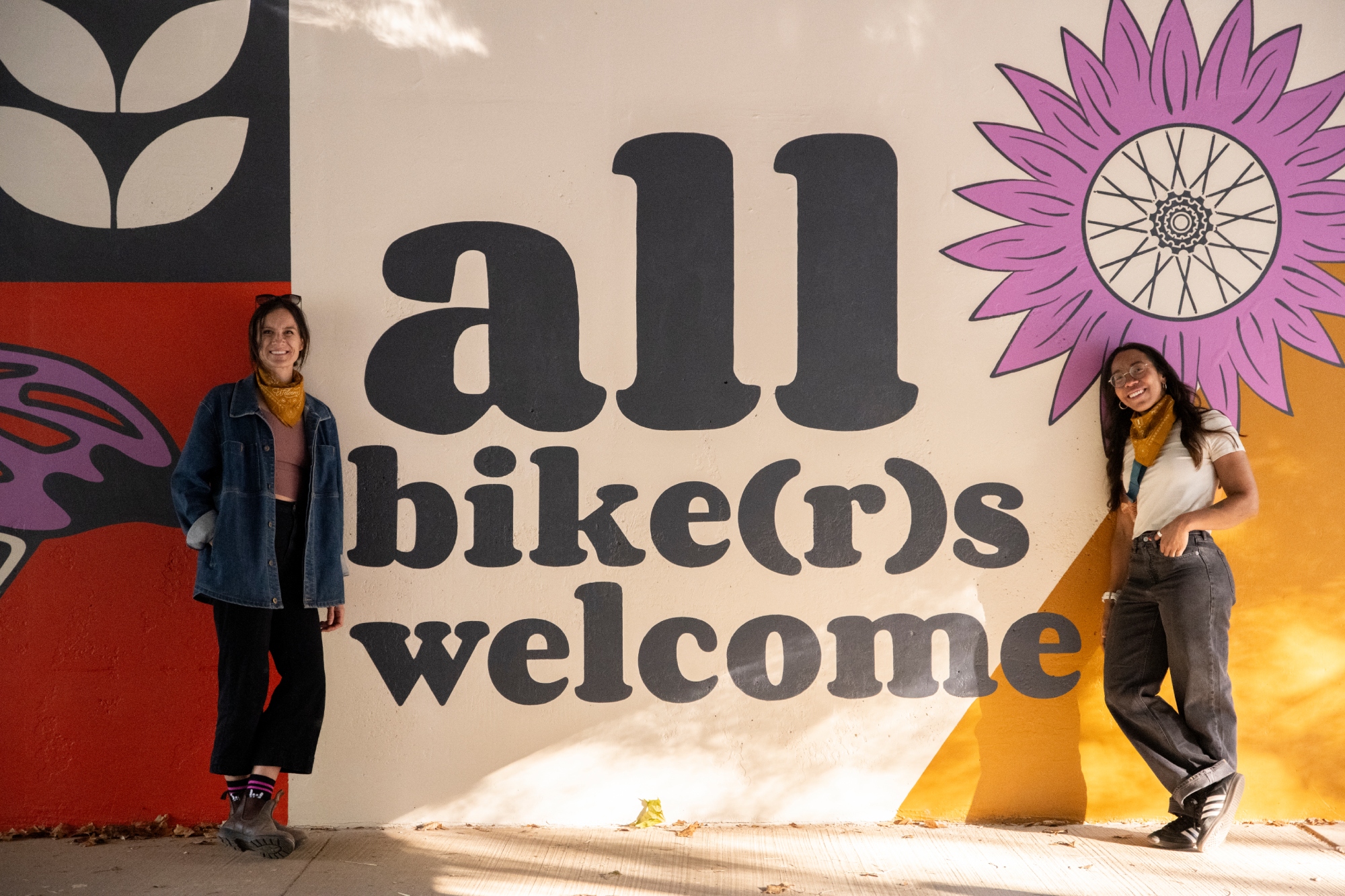
Bentonville, Arkansas, is a place of contradictions. It’s the birthplace of Walmart and also home to one of the country’s most progressive art institutions, Crystal Bridges Museum of American Art. It’s also one of the most aggressively marketed biking destinations in the U.S., with a rapidly expanding trail network, a tourism machine in high gear, and home to various bike brands. And, when riding around town, you'll find public art tucked into nearly every corner of the landscape.
“There are tons of murals here,” says Olzer. “Some are abstract, some are political. Ours wasn’t trying to be coded. We meant it: All. Bike(r)s. Welcome.”
So what changed?
In the initial meeting, Mayor Orman attributed the concerns to unnamed city council members and discouraged taking the issue back to the Public Art Advisory Committee, suggesting instead that they “figure this out” quietly.
According to Dirksen and city records, the adjustments in the mural included slight changes to colour for visibility in the dim tunnel and shifts in placement to avoid water damage—modifications the artist described as typical in public art installations.
The real issue, however, wasn’t the paint. It was the perceived message.
Some officials claimed the colour palette resembled the transgender pride flag. But Dirksen disputes that the mural doesn’t depict a flag. And the pastel tones—what some interpreted as light blue, pink and white—are used separately and never in the same sequence. A helmet here, a water bottle there. One vertical column features lavender and blue bars, but the order is reversed, and the geometry is abstract.
The actual paint list tells another story: Sherwin-Williams’ Dynamic Blue, Cyberspace (charcoal), Patience (beige), and Valspar’s Purple Stripe and Impala, a deep mustard. “The colors were chosen because they looked good together,” says Paige Dirksen. “They’re modern and vibrant. They reflect the energy of this community.”
Still, perception is subjective. “Colour is so relative,” Dirksen notes. “What looks pink to one person might look violet to another. Especially in a tunnel.”
Even Councilmember Octavio Sánchez, who had initially raised concerns about hidden symbolism, later conceded that the differences were negligible. In a public hearing, he remarked that the proposal and final mural “look the same” to him.
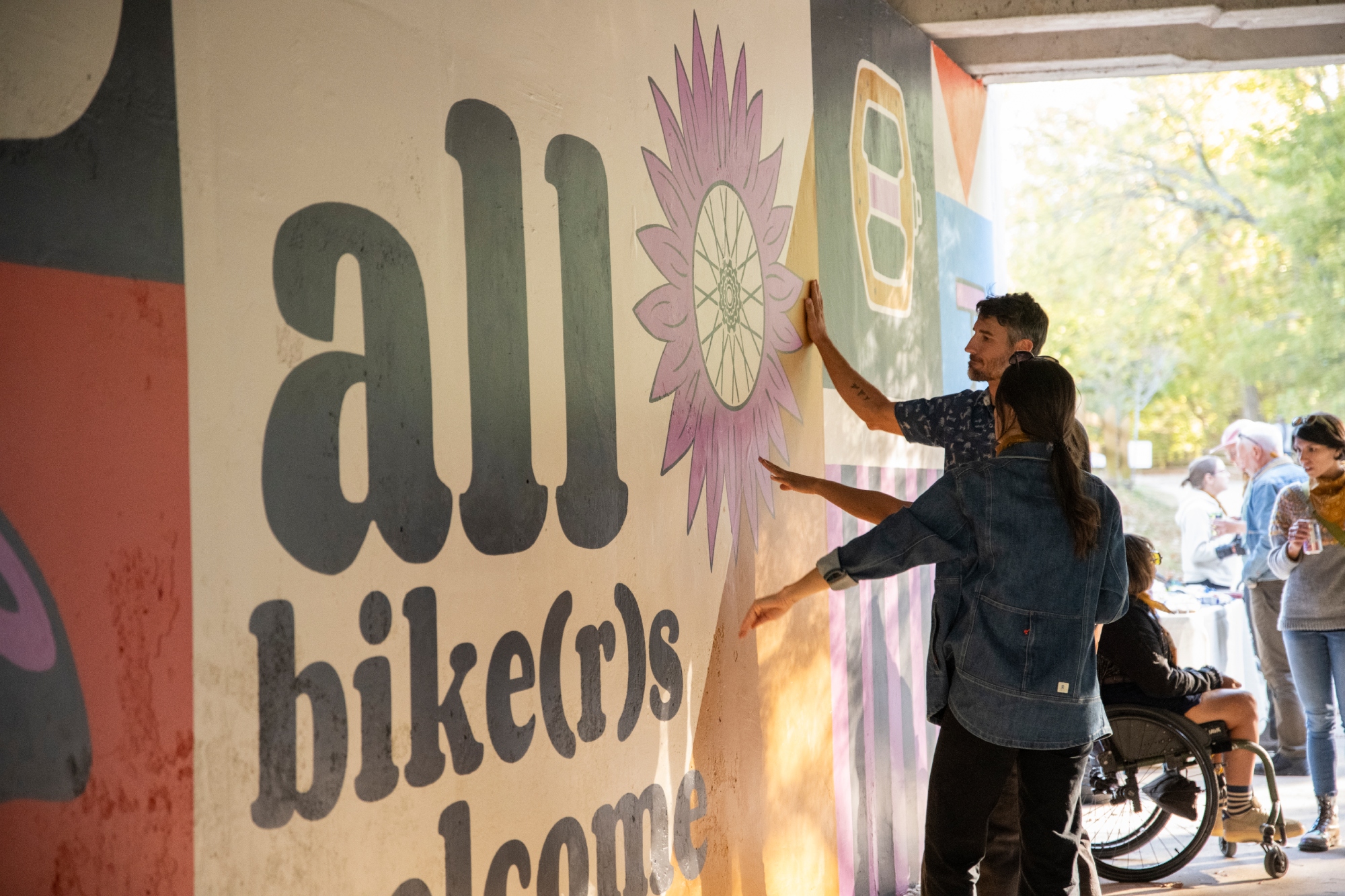
Differing Views
By that point, though, the debate had moved beyond colour swatches and placement tweaks. It had become a referendum on meaning, on what the mural might symbolise.
As discussion about the mural continued, internal communications obtained via public records requests revealed disagreement among city officials. One council member reportedly referred to Dirksen with a derogatory term. Another described the nonprofit as “pushing an agenda.”
Dirksen said the mural was intended to be broadly inclusive. “If there are people from the transgender community who see themselves in this mural or interpret those colours in a certain way, I love that,” she says. “That makes me so happy, because when we say ‘all bikers welcome,’ that absolutely includes the transgender community.”
The most explicit objection came from Councilmember Beckie Seba, in a publicly released email to a constituent:
“My opinion is that the piece should be removed altogether or the statement and trans colours removed... The organisation behind it is not inclusive of all, as the name suggests, and as a city, we should not be advertising for any group that is politically or ideologically driven... The word ‘All’ got me though.”
The mural, including the "all bike(r)s welcome" message, passed through the city's public art process without objection. Concerns arose only after installation.
In the same email, Seba acknowledged, “I should have caught this in [the] public art [hearing] but I didn’t, and for that I do take great responsibility.” She added that if residents disagreed with her, they could express it “at the next election.” Her message introduced no new facts, but it made public what had been whispered: the discomfort wasn’t with the paint job. It was with how people might interpret it.
“I helped make that”
When questions about the mural’s future started to swirl, All Bikes Welcome requested to speak at a Public Art Advisory Committee meeting. The artist asked for clarity. Both requests were denied.
So Dirksen and Olzer went public. They spoke out, organised support and rallied allies. Parents, teachers, artists and cyclists began writing emails, submitting comments and showing up to public meetings.
On May 27, 2025, more than 100 people packed into City Hall. This was, according to one council member, the largest turnout for a single issue in Bentonville’s recent history.
A parent described the moment she told her daughter, who had helped paint the mural, that it might be removed: “She said, ‘They can’t. I helped make that.’”
Others called out the double standard: “This mural was never about a single identity,” said Marley Blonsky, co-founder of All Bodies on Bikes. “It was about shared identities. And this process has not been fair.”
Still others echoed that message: the mural was a patchwork, made by kids, commuters, walkers and mountain bikers. To say otherwise, one speaker added, was “to invent controversy.”
But beyond the symbolism, one question rose above the rest: Did the city follow its own rules?
Bentonville’s municipal code lays out a clear procedure for complaints about public art. It requires “ten or more signed, written objections” before any action is taken.
No such complaints were made public.
Instead, city officials referenced “informal concerns” from unnamed council members. So a community member, unaffiliated with All Bikes Welcome, filed a Freedom of Information Act (FOIA) request to obtain all communications about the mural.
The FOIA response turned up no formal complaints. Just text messages. One council member speculating with a resident about the artist’s intentions.
At the May 27 meeting, Bentonville resident Mike Rush posed three questions:
“Did the city receive 10 signed complaints?
Was there a meeting with the artist and those raising concerns?
Was the decision made in line with policy?”
“From everything I’ve seen,” he said, “the answer is no.”
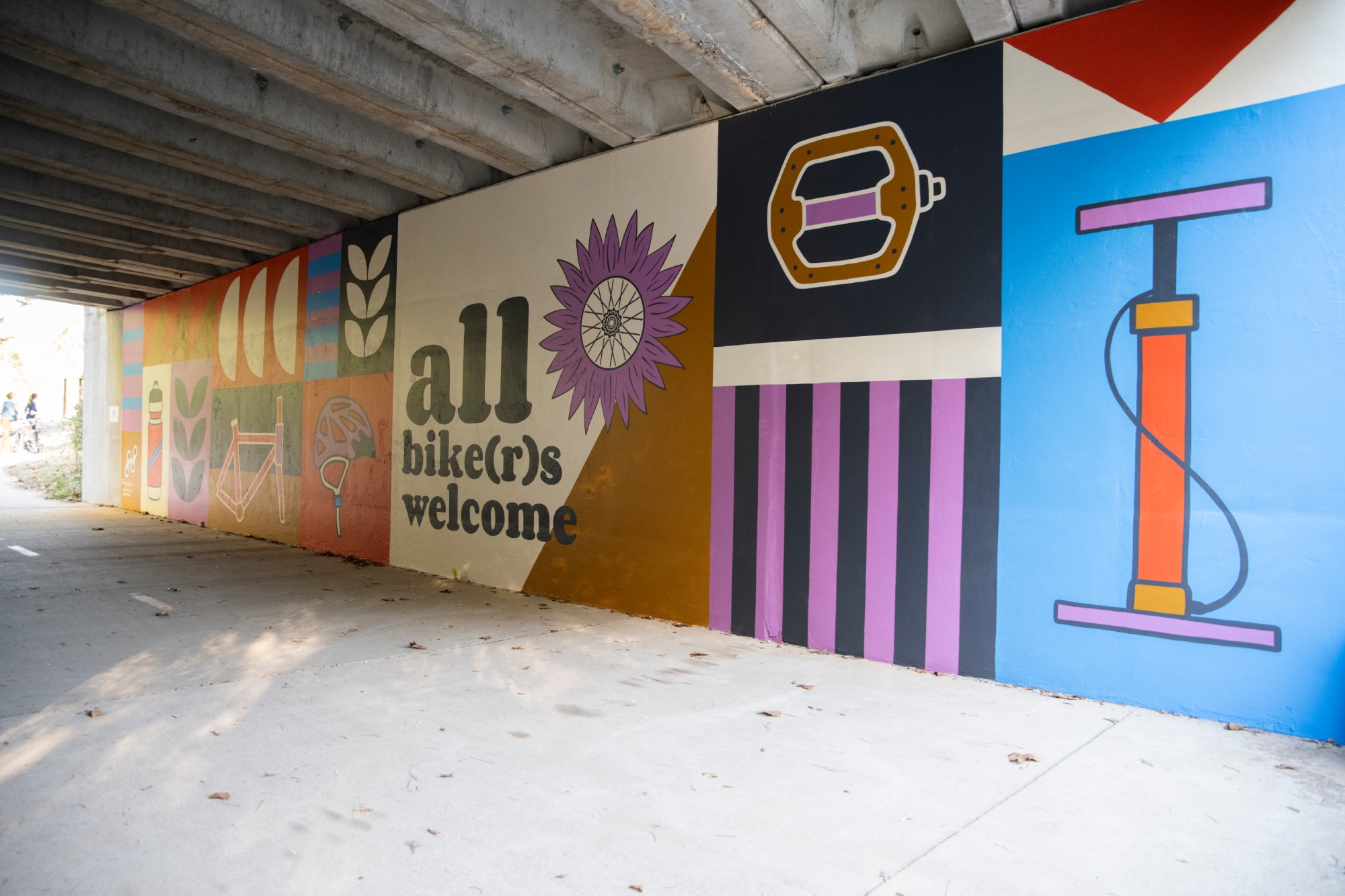
The Debate Boils Over
By the time the June 9 Committee of the Whole meeting reached public comment, frustration had reached a breaking point, among the mural supporters and the council members alike.
Some appeared baffled at how the City had gotten here. Others seemed eager to make it go away.
One councilmember acknowledged that the City had no system in place to verify whether finished murals matched their approved designs. Another, Councilmember Bill Burckart, asked why this mural was being singled out.
“Art comes before us in one form, and we see the final version, and it’s a little different—placement, colour, scale. That happens all the time. We’ve never made an issue of it before,” he stated.
Even Sánchez, who had initially suggested the colours could carry hidden meaning, said: “When a mural becomes a proclamation, that’s when we have a problem.”
He estimated that about 20% of residents might be offended, though no data was provided.
Councilmember Seba echoed the fear: “If we keep it the way it is, a lot of people are going to be offended. If we change it... a lot of people are going to be offended.”
Meanwhile, another council member pushed back against the idea that the mural carried any coded message. “Factually,” one said, “there’s no grounds for the trans flag interpretation.”
Dirksen addressed the council directly, stating: “It’s not just paint. It’s kids’ names on the wall. It’s a memory. You’re not just asking me to fix a color—you’re asking me to erase people’s work.”
Critics may have framed their objections as technical, but for supporters, the implications were unmistakably ideological. “This mural was created to make everyone feel welcome,” one speaker told the council. “The way it’s being targeted now sends the opposite message.”
The fact that the mural sparked such backlash—not for what it said explicitly, but for what some feared it might imply—became a referendum not just on art, but on who gets to belong in public space.
As the meeting went on, some council members began to disengage. “I don’t want to spend another minute on this,” one said. “We have real work to do, and I’m still getting emails about a tunnel painting.”
Another added: “I’ve received more messages about this than anything else in the last year—and most of them weren’t even from Bentonville residents.”

The Mural Will Stay
In the end, the mural will stay. On June 10, the Bentonville City Council formally passed a resolution affirming the artwork, while agreeing to remove the artist’s and nonprofit’s Instagram handles from the wall and replace them with a standard city-issued plaque.
For mural supporters, it was a small but meaningful victory. Councilwoman Gayatri Agnew, who had defended the mural throughout the controversy, shared this statement following the vote:
“I’m proud of our community for standing up and for our City Council for affirming that Bentonville is a place where all are welcome. The ‘All Bike(r)s Welcome’ mural is one of over 140 pieces of public art on display in our town—it is a unique piece that was created by over 80 community members and is a community mural. I’m grateful to the artist, Paige Dirksen, for her vision, her leadership, and her commitment to community.”
With the mural, its intended message remains.
“We didn’t just paint a mural to say ‘all bikes welcome,’” Olzer says. “We painted it, and defended it, to prove we meant it.”
Since the vote, All Bikes Welcome has returned to its mission: organising inclusive rides, planning its flagship event, Grit Fest, and expanding access to cycling for people of all backgrounds. A new mural is already in the works in nearby Fayetteville, where artist Lisa Congdon is expected to collaborate with Dirksen.
Dirksen hopes the experience can lead to a more inclusive future. “Even when things go sideways, respect, persistence, and transparency can lead us back to collaboration,” she says. “This moment has to be a turning point—one that leads to clear policies, stronger community dialogue, and a deeper understanding of how art reflects who we are.”
And for those riding or walking through the NW 3rd Street tunnel, the mural offers more than bike-themed decoration. Its pastel palette and bold typeface serve as a quiet but enduring reminder—not just of the artwork itself, but of the community that showed up to protect it.
“I hope people see it and feel joy,” says Olzer. “And I hope they also know we fought for that joy. It didn’t just appear.”
